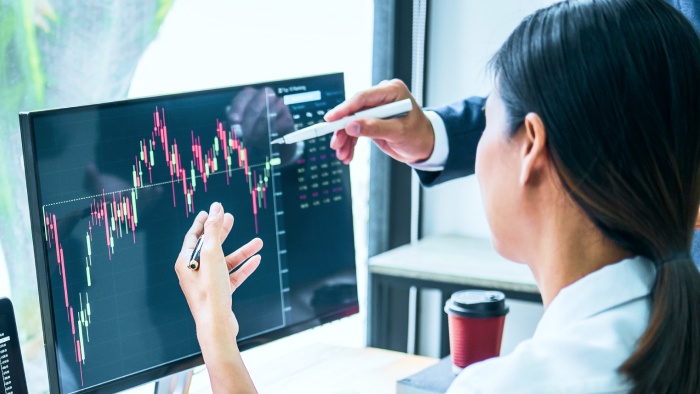Commodity Trading Course
Commodity trading may be a common term in investment parlance. Aside from stocks, various commodities are traded in markets, investing during which can help you diversify your portfolio and augment gains. If invested in prudence, commodities can provide good returns in the long run thanks to their changing prices over time Commodities are basic raw materials wont to produce goods for everyday use. The building block of a worldwide economy, commodities include items like oil, sugar, metals, and so on There are many advantages of trading in commodities.
1 Protection against inflation
As the demand for goods and services rises, it results in an increase in the price of the goods and services as the cost of the raw materials i.e. commodities increases In such an inflationary environment, interest rates rise, which increases the value of borrowing and subsequently, reduces the web income of the company. A decline in the income of the company also affects the profits shared with the shareholders. Therefore, during inflation, the costs of the stocks fall. In contrast, the costs of commodities required in the manufacturing of finished goods substantially rise due to the growing demand, ultimately leading to the rising prices of the final goods Hence, investors flee to commodity futures to guard their capital against the effects of inflation and maintain their value.

2 Hedge against risky geopolitical events
Geopolitical events like conflicts, riots, and wars disrupt the availability chain which leads to scarcity of resources because it becomes difficult to procure and transport raw materials to the factories where they are converted into finished goods In such a case, best stock market course in india the availability of raw materials gets affected, which ends up in a mismatch of demand and supply, causing the costs of the commodities to rise exponentially During such events, there’s pessimism in the market causing stock prices to fall drastically. Hence, investing in commodities can help stem losses in an investment portfolio.
3 High-leverage facility
Commodity derivatives like futures and options provide an exceptionally high degree of leverage. you’ll control a big position by paying only 5% to 10% of the contract value as an upfront margin Any insignificant move within the prices of the commodities can result in exponential gains. Hence, you create the likelihood of humongous returns by using leverage in commodity trading The minimum margin for commodity futures may vary but is far lower than stocks. you would like to place only 23% of the total value of trade as the initial margin for wheat futures.
4 Diversification
Commodities have a negative or low correlation with stocks. Commodities are usually raw materials required to form finished goods Rising commodity prices increase the value of production, which reduces profits, leaving little or no for shareholders and reducing the earnings per share. This ultimately results in a decline in the prices of the stocks Also, thanks to inflation, this value of future cash flows paid by stocks declines because future cash will be able to buy lesser goods and services than they would buy today. the costs of the stocks drop to reflect this reduction in value Hence, stocks had best when the rate of inflation is stable or slowing. However, commodities perform better when the speed of inflation is rising For Example If oil prices increase, the value of owning a car also increases, which ends up in declining car sales. Therefore, the costs of auto stocks also fall. share market training Similarly, when metal prices rise, the value of building houses increases, thus reducing the demand for land, which reflects in the falling prices of real estate stocks Hence, thanks to this negative correlation where an increase in the price of commodities drives the stock prices down, the losses incurred in stocks are often adjusted against the gains attained by commodity derivatives. Thus, adding commodities provides diversification to your portfolio Commodities answer fundamental factors like weather, strike, and s, and geopolitical instability, which affects the availability and demand of commodities However, stocks or bonds don’t respond to fundamental factors in the same manner. Hence, the movement within the prices of commodities is independent of the movement in the prices of stocks This negative or low correlation with stocks makes commodities an attractive investment to achieve diversification in a portfolio.

5 Transparency
Compared to the outcry system in the past, trades in commodities are now conducted on an electronic trading platform accessible to all or any market participants The electronic trading platform helps in fair price discovery enabled by broad-scale participation without the intervention of the customer and seller. the worth determination is driven by supply and demand, trading classes price eliminating the danger of any form of manipulation Price discovery happens when the worth and quantity quoted by the seller and buyer match perfectly. During the whole trade, the customer and seller remain anonymous, thus enabling a transparent price discovery with no scope for manipulation.

Types of Commodities
Today, commodities are mainly grouped into four major sectors.
1. Agriculture: Spices, grain, pulses, oil, and oilseeds.
2. Metals: Silver, platinum, and gold.
3. Energy: gas, Brent crude, crude oil, thermal coal.
4. Livestock and meat: Eggs, feeder cattle.
Metal and energy are widely traded within the commodity market.
Understanding the kinds of commodities available, online share trading course and by gaining knowledge of the market enables an investor to form smart investment decisions According to the above types of commodities, 5 commodities are considered to be the highest commodities to trade based on.
• Their traded volumes
• Liquidity
• Demand and provide the effect
• The overall price movements of the commodity.

